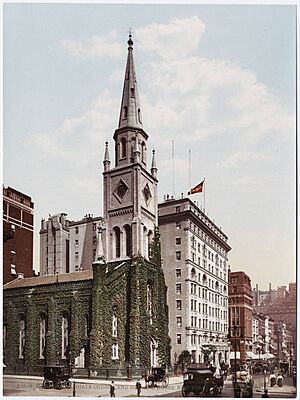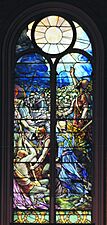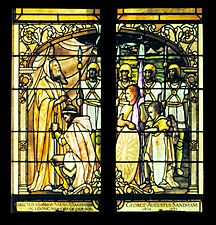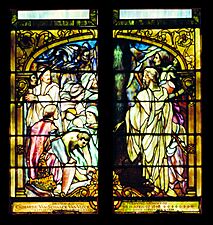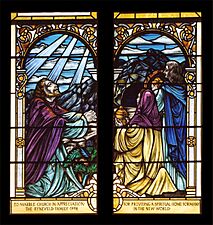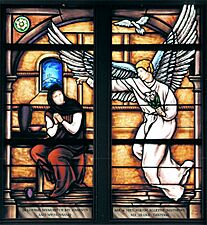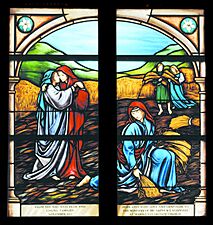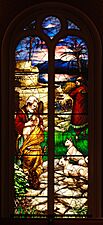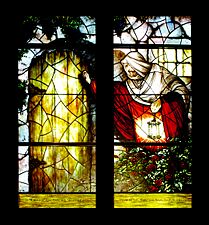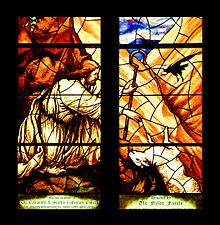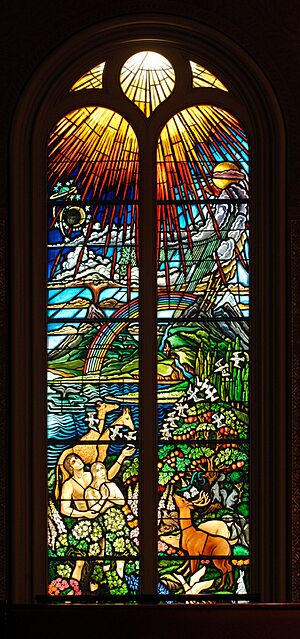Marble Collegiate Church facts for kids
|
Marble Collegiate Reformed Church
|
|
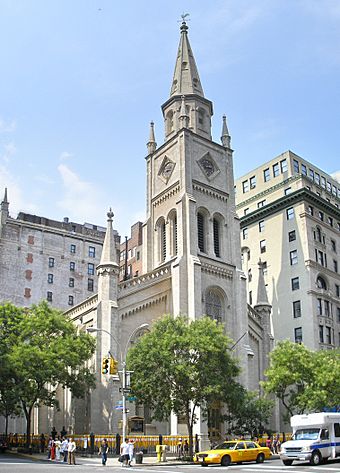
Marble Collegiate Church
|
|
| Location | Manhattan, New York City, New York |
|---|---|
| Built | 1851 |
| Architect | Samuel A. Warner |
| Architectural style | Romanesque Revival |
| NRHP reference No. | 80002699 |
Quick facts for kids Significant dates |
|
| Added to NRHP | April 9, 1980 |
The Marble Collegiate Church is a very old church in New York City. It was started way back in 1628, making it one of the oldest Protestant churches in North America. It's located on Fifth Avenue in the NoMad neighborhood of Manhattan.
The church building was constructed between 1851 and 1854. It was designed by Samuel A. Warner in a style called Romanesque Revival. The outside of the church is covered in special stone called Tuckahoe marble. This marble is why the church, which was first called the Fifth Avenue Church, got its new name in 1906.
The building is considered very important historically. It was named a New York City landmark in 1967. Later, in 1980, it was added to the National Register of Historic Places.
Contents
History of Marble Collegiate Church
The church congregation began in 1628. It was part of the Dutch Reformed Church, which came from the Netherlands. For its first 150 years, Marble Church shared its ministers with other churches in the city. These churches were all part of the "Collegiate" group.
The name "Collegiate" is still used today. It shows the shared history of four churches in New York City. These churches work together to manage their properties and investments. The other Collegiate churches are Middle Collegiate, West End Collegiate, and Fort Washington Collegiate.
Famous Ministers and Events
Norman Vincent Peale, a well-known author, was the senior minister from 1932 to 1984. He wrote the famous book The Power of Positive Thinking. Under his leadership, Marble Church became very popular across the country. It was even called "America's Hometown Church."
Many important events happened at the church. On November 19, 1961, the famous actress Lucille Ball married her second husband, Gary Morton, there.
After Peale, Arthur Caliandro became the senior minister. He served for 25 years, from 1984 to 2009. During his time, the church started its media ministry called MarbleVision. It also welcomed its first woman minister and its first women elders. A new stained-glass window was also added, the first in almost 100 years.
In 2009, Michael B. Brown took over as senior minister. He was followed by Michael Bos in 2018.
Church's Welcoming Approach
The Marble Collegiate Church is known for being welcoming to all people. This includes people in same-gender relationships and those with non-cisgender identities. The church performs same-sex marriage ceremonies. It also has a special group for queer people called GIFTS. The church takes part in the annual NYC Pride parade. Its sermons and website materials encourage an open view of the Bible.
Pastors
- Daniel A. Poling, 1922–1939
- Norman Vincent Peale, 1932–1984
- Arthur Caliandro, 1984–2009
- Michael B. Brown, 2009–2018
- Michael Bos, 2018–
Beautiful Stained Glass Windows
The main part of Marble Church, called the nave, has ten large windows. Each window is about 25 feet tall and 5 feet wide. They have a special design with two arched sections. This design is typical of Romanesque architecture.
When the church first opened in 1854, these windows had clear glass. In 1891, they were replaced with a simple design of blue-green and amber diamond shapes. A minister named Dr. Burrell wanted to fill the church with windows showing Bible stories. It took over a century for his dream to fully come true.
Frederick Wilson's Art
The first story-telling window was put in in 1900. It shows Joshua leading the Israelites. This window was made by Frederick Wilson. He was born in Dublin and worked as a stained-glass artist in England.
In 1892, Wilson moved to the United States. He worked for Tiffany Studios, a famous company, from 1893 to 1923. He created over 500 windows and glass mosaics for them. He was their most active artist.
Another window by Wilson, showing Moses and the Burning Bush, was installed in 1901. Both of his windows show the American opalescent style. This style was made popular by Tiffany Studios.
Roy Coomber's Creations
Almost 100 years passed before more story-telling windows were added. A group was formed to continue Dr. Burrell's idea. They wanted to commission new windows for the other eight spots. The first new window was by Roy Coomber. It shows the Crucifixion and Pentecost.
Coomber (1930–2016) studied art in Brighton, England. He worked for Goddard and Gibbs of London. His beautiful work can be found in many places across South West England.
Sarah Hall's Windows
Ministers Arthur Caliandro and Edwin G. Mulder helped set up a committee for the new windows. They worked with the Rambusch Decorating Company, which was founded in 1898. Martin Rambusch from the company helped involve the church board and members in choosing artists.
This led to two windows by Canadian artist Sarah Hall. The "Nativity" window was created in 2000. The "Peaceful Kingdom" window followed in 2001.
Debora Coombs' Designs
The next two windows were made by British artist Debora Coombs. She studied art at several famous colleges. Coombs moved to America to design many stained-glass windows for St. Mary's Cathedral (Portland, Oregon).
Her work for Marble Collegiate Church on "Stilling the Storm" began shortly after the September 11 attacks. This window shows how people react during a crisis. Her second window, "Sermon on the Mount," was completed in 2004. Coombs is known for making the lead lines in her windows blend into the art.
Nikki Vogt's Contributions
When Marble Church needed more artists, Rambusch suggested Nikki Vogt. Vogt was their former head designer for glass painting. She said becoming a stained-glass artist was a surprise for her. "It finds you," she explained.
Vogt worked with Rambusch to create two windows: "Good Samaritan" (2006) and "Prodigal Son" (2007). Rambusch helped make and install these beautiful windows.
Kenneth Crocker's Final Window
While Vogt's windows were being made, Rambusch hired English artist Kenneth Crocker. He worked on the very last window, which shows "The Creation." As recently as 2022, Crocker was still working on new church windows.
See also
 In Spanish: Marble Collegiate Church para niños
In Spanish: Marble Collegiate Church para niños
- Oldest churches in the United States






